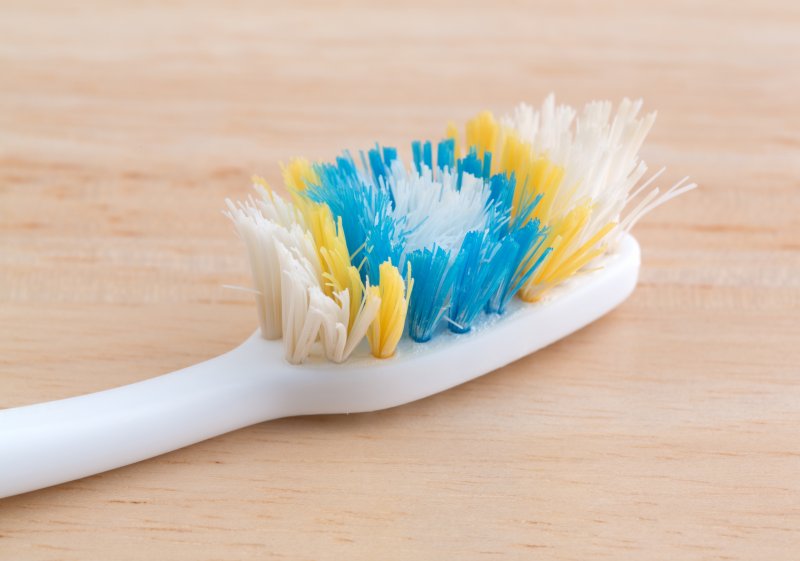
In order to have optimal oral health, regular flossing and brushing is essential. But as much as you use your toothbrush, there’s no way that it can last forever. Using proper and well-maintained tools, like toothbrushes, goes a long way in giving you a healthy smile. But how long do toothbrushes generally last? When should you buy a new one? How do you get the most out of your toothbrush before you replace it? Continue reading to learn from your dentist everything you need to know about the lifespan of your toothbrush.
How Often Should Manual Toothbrushes Be Replaced?
The amount of time you should wait before replacing your toothbrush isn’t always the same, however, the Centers for Disease Control and Prevention (CDC) recommends that you should switch out your manual toothbrush about every 3-4 months. This is because in this amount of time, the bristles begin to lose their stiffness and become less effective at cleaning your teeth. You should keep an eye on the shape that your bristles are in to determine the best time to get a new one. If you or anyone else in your household becomes sick, it is a good idea to replace your toothbrush. This is especially the case for viral and bacterial infections, like strep throat.
When Should Electric Toothbrush Heads Be Replaced?
Just like the bristles on manual toothbrushes, electric toothbrush bristles also become worn over time. It may happen even faster because the heads on electric toothbrushes tend to have shorter bristles. This is why it’s recommended that you have the head changed every 12 weeks. You may need to have it replaced even sooner if you notice that it is showing signs of wear and tear.
How to Make the Most Out of Your Toothbrush
- Do not keep your brush in a close container when you aren’t using it. This creates an environment where bacteria grow and strive.
- Rinse the head of your toothbrush under clean water after each time you use it.
- Don’t use disinfectants or mouthwash to sanitize your toothbrush after using it.
- Make sure your toothbrush isn’t touching heads with another one. It is best if you store them separately in a different cup.
- Never share a toothbrush with another person.
By taking these steps and keeping an eye on the condition of your brush, you can make the most out of it and ensure that it is replaced when needed. Remember that optimal oral health relies on having a good dental hygiene routine. This means using the proper tools.
About the Author
Dr. Nicholas Brong provides a wide variety of services at Zumbro Family Dental in Rochester, MN. He earned his Doctor of Dental Surgery from the University of California in San Francisco and has received additional training from the University Associates in Dentistry, the Dental Implant Institute of Chicago, and UCSF. For more information on proper oral hygiene or to schedule an appointment with Dr. Brong, visit his website or call (507) 288-1066.





